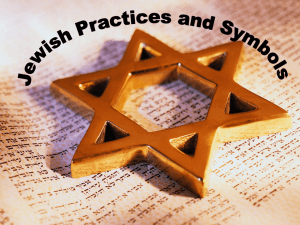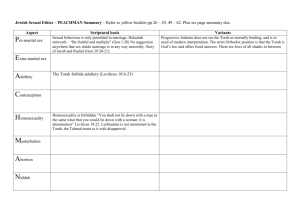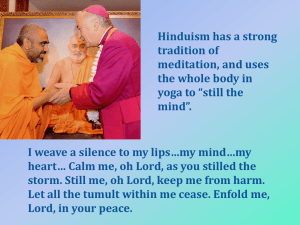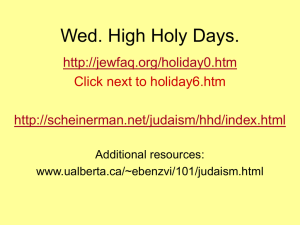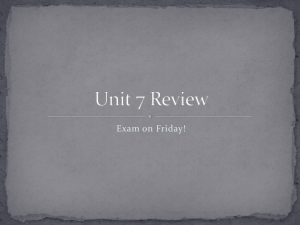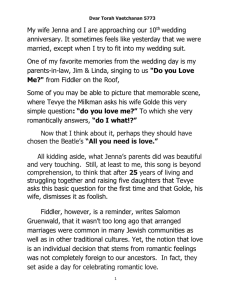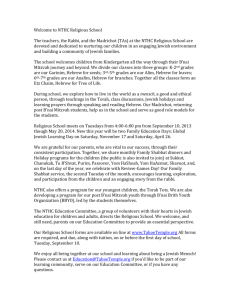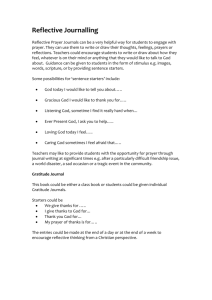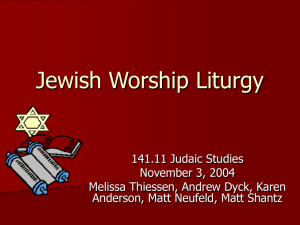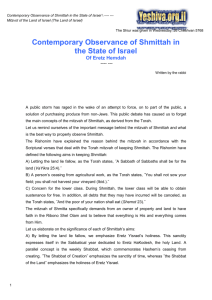Holy Blossom Temple Religious School Curriculum Outline Grade 4
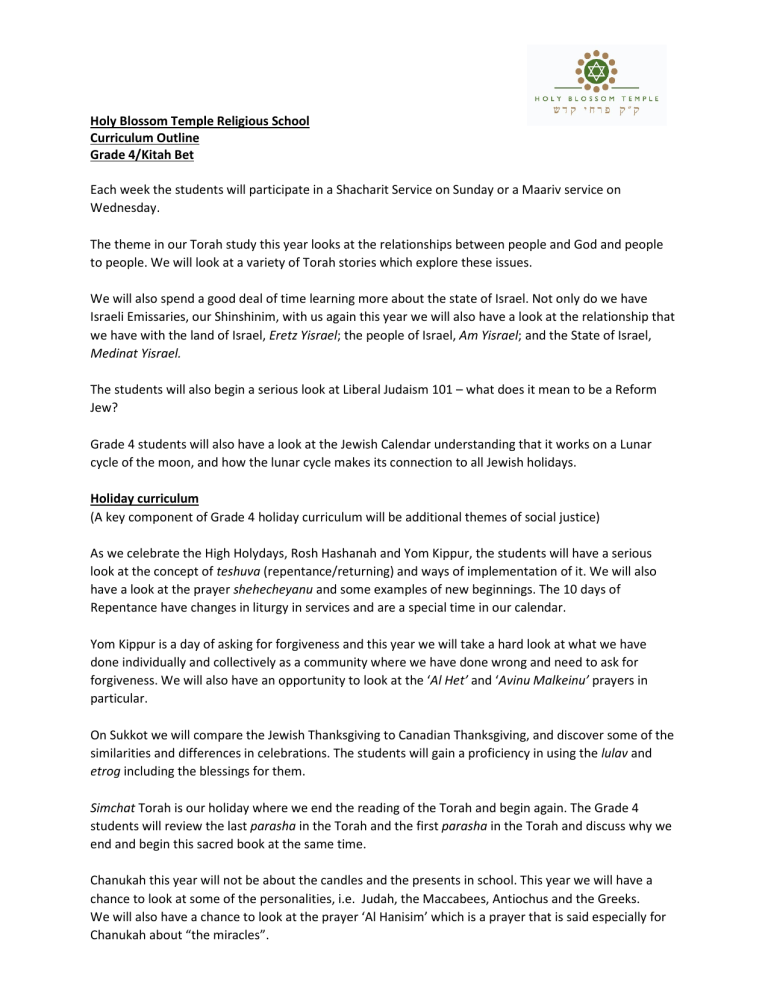
Holy Blossom Temple Religious School
Curriculum Outline
Grade 4/Kitah Bet
Each week the students will participate in a Shacharit Service on Sunday or a Maariv service on
Wednesday.
The theme in our Torah study this year looks at the relationships between people and God and people to people. We will look at a variety of Torah stories which explore these issues.
We will also spend a good deal of time learning more about the state of Israel. Not only do we have
Israeli Emissaries, our Shinshinim, with us again this year we will also have a look at the relationship that we have with the land of Israel, Eretz Yisrael ; the people of Israel, Am Yisrael ; and the State of Israel,
Medinat Yisrael.
The students will also begin a serious look at Liberal Judaism 101 – what does it mean to be a Reform
Jew?
Grade 4 students will also have a look at the Jewish Calendar understanding that it works on a Lunar cycle of the moon, and how the lunar cycle makes its connection to all Jewish holidays.
Holiday curriculum
(A key component of Grade 4 holiday curriculum will be additional themes of social justice)
As we celebrate the High Holydays, Rosh Hashanah and Yom Kippur, the students will have a serious look at the concept of teshuva (repentance/returning) and ways of implementation of it. We will also have a look at the prayer shehecheyanu and some examples of new beginnings. The 10 days of
Repentance have changes in liturgy in services and are a special time in our calendar.
Yom Kippur is a day of asking for forgiveness and this year we will take a hard look at what we have done individually and collectively as a community where we have done wrong and need to ask for forgiveness. We will also have an opportunity to look at the ‘ Al Het’ and ‘ Avinu Malkeinu’ prayers in particular.
On Sukkot we will compare the Jewish Thanksgiving to Canadian Thanksgiving, and discover some of the similarities and differences in celebrations. The students will gain a proficiency in using the lulav and etrog including the blessings for them.
Simchat Torah is our holiday where we end the reading of the Torah and begin again. The Grade 4 students will review the last parasha in the Torah and the first parasha in the Torah and discuss why we end and begin this sacred book at the same time.
Chanukah this year will not be about the candles and the presents in school. This year we will have a chance to look at some of the personalities, i.e. Judah, the Maccabees, Antiochus and the Greeks.
We will also have a chance to look at the prayer ‘Al Hanisim’ which is a prayer that is said especially for
Chanukah about “the miracles”.
Tu B’Shevat is a holiday that Jews mark in different ways. It has become ‘the environment’ holiday. We will have a chance to look at the Jewish view of the “greening of our environment”, and investigate some of the environmental issues currently affecting Israel.
Purim has different meaning for children as they grow older. This year, we will have a look at the ‘ Al
Hanisim ’ prayer which is read on Chanukah and Purim but compare and contrast the differences which we will find in the prayer for each holiday.
Pesach brings many important details which must be learned. In the Grade 4 year, the students not only be able to explain the entire sequence of the Israelites departure from Egypt, but will also have a chance to investigate some of the customs in detail. They will have a look at the meaning and significance of
Elijah’s Cup and Miriam’s Cup. They will do a character analysis of Moses vs. Pharaoh. Additionally they will be familiar with the following: the holiday Kiddush, the 10 plagues, and the order of the seder.
Yom HaShoah will give the students the opportunity to read stories about the Holocaust. They will learn about Jewish Life in Eastern Europe pre-1933, i.e. city life vs. shtetl life, and discover some of their own family roots.
Yom Ha’Atzmaut, Israel’s day of independence will allow us to learn more about Israel and the political system. We will compare the political system in Israel and Canada, and also have a look at the Israeli army as an organization; who created it, when was it created, who enlists, how long are people in the army? This is something that our Shinshinim can be an asset!
Shavuot is the holiday of the giving of the Torah and also we read the special megillah (the scroll) of
Ruth. The students will have a chance to read through parts of Megillat Ruth.
Hebrew Language study:
Kitah Bet - Learning Hebrew prayers
Hineni part 1 contains prayers, blessings and songs for home and synagogue observance of Shabbat and the holidays. The book contains 9 chapters.
Students will learn to read fluently from the siddur, translate key words, understand the themes of the prayers, place the prayers in the sequence of the service and actively participate in synagogue services.
Hineni presents several prayers such as Sh’ma, Ve’Ahavata, Mi Chamocha in their original context – the actual page from the Torah. It also isolates and reviews common prayer-reading problems – such as visually similar letters - providing reinforcement throughout. It also contains a milon – dictionary for easy look-up of words.
For the keen learners who want to practice at home Hineni interactive CD is available, allowing students to read, hear, sing prayers and play games.
As well, the website www.behrmanhouse.com
is an excellent tool to learn, review and catchup with the class. Enter the site, click on the tool bar – learn; choose from the drop menu Hebrew, click on @home practice prayer; click on Hineni 1 (green) and choose the prayer you want. Musical notes located by the prayer signifies that you can listen to the singing of the prayer.
